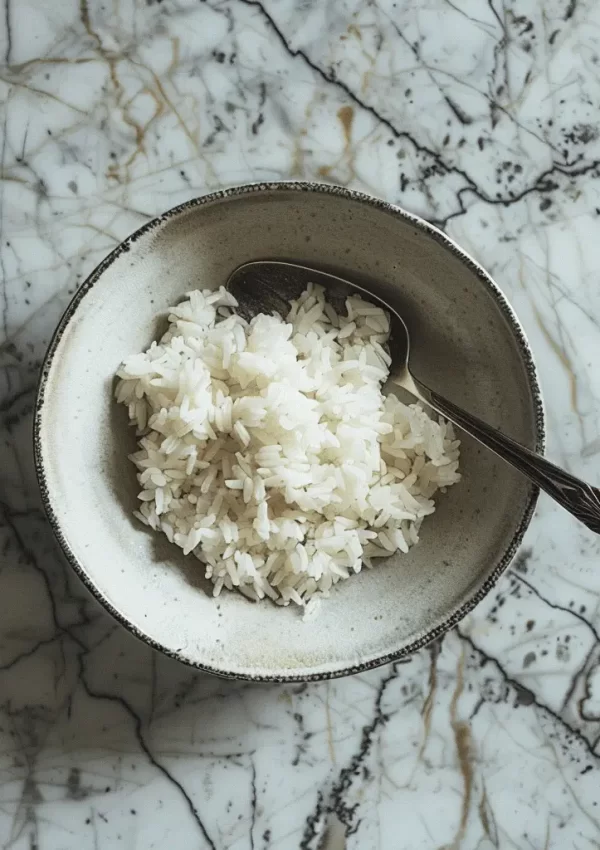What are the highest umami foods? Let’s dive into a complete umami food list and explain how to incorporate umami flavor without MSG!
This post contains affiliate links, which means I’ll receive a commission if you purchase through my link, at no extra cost to you. Please read the full disclosure here.
Ever taken a bite of something so savory, so soul-huggingly delicious that you can’t quite put your finger on why it’s so good? That’s the magic of umami! Often called the “fifth taste” (alongside sweet, sour, salty, and bitter), umami is the secret sauce that turns an okay dish into one you can’t stop eating.
In this post, we’re diving headfirst into all things umami: what it is, how to get it naturally (no MSG needed!), the best foods to bring it to your table, and how to turn up the flavor dial in your soups and other dishes.
Ready? Let’s make your cooking unforgettable!
This post is all about the Highest Umami Foods (Umami Food List).
What Is Umami?
Umami is that savory, meaty, rich flavor that makes your taste buds do a happy dance. Discovered in 1908 by Japanese scientist Kikunae Ikeda, umami got its name from the Japanese word meaning “essence of deliciousness.” Ikeda identified glutamate—an amino acid found in foods like seaweed and meat—as the key to this deep, savory flavor.
So, what gives umami its magic? It’s all in the science! Umami-rich foods contain compounds like glutamates, inosinate, and guanylate, which interact with specific taste receptors on your tongue. Together, they enhance flavors and create that “wow” factor in dishes.
Umami isn’t just about making food taste good; it’s about balance. It adds depth and rounds out flavors, turning a simple meal into something extraordinary.
How to Get Umami Flavor Without MSG
Let’s clear up a common misconception: you don’t need MSG to create umami! While MSG is a concentrated form of glutamate, umami naturally exists in many common ingredients you probably already have in your kitchen.
Here’s how to unlock umami without MSG:
- Fermented foods: Think miso, soy sauce, and kimchi. Their fermentation process intensifies natural umami flavors.
- Roasted and dried veggies: Tomatoes, mushrooms, and even onions bring out concentrated umami when roasted or dried.
- Seaweed and aged cheeses: Kombu, Parmesan, and Gruyère are umami powerhouses.
- Rich stocks and broths: Slow-cooked bone broth, mushroom stock, or dashi are liquid gold for umami.
The trick? Layer these ingredients. Add a splash of soy sauce to a soup base, sprinkle Parmesan over roasted veggies, or mix miso into a marinade. The result? Flavors that practically jump off the plate!
What is DASHI?
Dashi is a traditional Japanese broth that serves as the foundation for many Japanese dishes. It is simple to make yet incredibly rich in flavor, embodying the essence of umami.
The classic version of dashi is made by steeping kombu (dried kelp) and katsuobushi (fermented, smoked, and dried bonito flakes) in water. Variations may also include dried shiitake mushrooms or niboshi (dried baby sardines) for additional depth.
Dashi is used in a wide range of recipes, including miso soup, ramen broth, sauces, and stews, and it provides a subtle yet savory base that enhances the taste of other ingredients.
Unlike Western stocks or broths, dashi is prepared quickly, often in just minutes, and it focuses on extracting the natural umami from its ingredients rather than creating a complex, long-simmered liquid.
Highest Umami Foods: A Complete Umami Food List
Ready to stock your pantry with umami-packed goodness? Here are the all-stars of the umami world:
Seaweed
Kombu, wakame, and nori are bursting with natural glutamates.
Mushrooms
Shiitake (especially dried), porcini, and morels add an earthy, savory punch.
Aged Cheeses
Parmesan, aged cheddar, Gruyère—salty, tangy, and loaded with umami.
Tomatoes
Sundried, roasted, or concentrated in paste form, tomatoes bring serious depth.
Onions
Bring out concentrated umami when roasted or dried.
Cured Meats
Bacon, prosciutto, and anchovies are umami bombs in small packages.
Fermented Foods
Miso, soy sauce, kimchi, and fish sauce are pantry must-haves.
Shellfish and Fish
Scallops, sardines, and tuna are packed with flavor.
Legumes
Lentils, chickpeas, and black beans develop rich umami when slow-cooked.
Rich stocks and broths
Slow-cooked bone broth, mushroom stock, or dashi are liquid gold for umami.
How to Add Umami Flavor to Soup
Soup is the ultimate canvas for umami. Here’s how to make it sing:
- Start with a strong base: Use bone broth, mushroom stock, or dashi for a head start.
- Layer umami-rich ingredients: Add roasted tomatoes, miso paste, or a splash of soy or fish sauce.
- Go the extra mile: Toss in a Parmesan rind while your soup simmers—it’s a subtle umami booster.
- Finish smart: Garnish with crispy bacon, a drizzle of truffle oil, or a sprinkle of Gruyère for that final flavor flourish.
With these tips, you’ll transform any soup from meh to mouthwatering in no time.
Why Umami Is So Satisfying
What makes umami so addictive? Umami stimulates specific taste receptors that make food feel rich and indulgent. Foods high in umami also enhance the perception of fullness, which might explain why a bowl of ramen or a hearty stew feels so comforting. Umami-rich dishes also tap into our emotional connections with food—think comfort, indulgence, and satisfaction.
Bonus: Adding umami to your cooking can make healthy meals taste amazing without relying on extra salt or fat. Who doesn’t love that?
Umami Food Pairings
Take your cooking to the next level by pairing umami-rich ingredients:
- Tomatoes + Parmesan + anchovies = Pasta sauce perfection.
- Shiitake mushrooms + soy sauce = Stir-fry magic.
- Bacon + eggs + aged cheddar = The ultimate breakfast combo.
Experiment with these pairings to create your own umami-packed masterpieces.
How to Use Umami to Add Depth
Mastering umami isn’t about adding just one ingredient—it’s about layering flavors and using the right techniques to bring out their best. Here’s how:
Layer It
Combine multiple umami-rich ingredients for a flavor explosion. For example, tomato paste and mushrooms in a stew create a rich, savory base.
Balance It
Umami shines when balanced with sweet, sour, salty, and bitter flavors. Try a squeeze of lemon to brighten an umami-rich soup.
Highlight It
Sometimes, a single umami ingredient is enough. A dash of soy sauce or a sprinkle of Parmesan can transform a simple dish.
Cook with Intent
Roasting, caramelizing, and reducing ingredients intensify their natural umami. Think roasted tomatoes, caramelized onions, or reduced balsamic vinegar.
Umami in Global Cuisines
Umami isn’t just a Japanese concept—it’s a global phenomenon. Here’s how it plays a starring role in cuisines around the world:
- Japanese: Dashi, miso soup, and soy-based dishes.
- Italian: Tomatoes, Parmesan, and cured meats in pasta sauces and risottos.
- French: Mushroom duxelles, beef bourguignon, and Gruyère soufflés.
- Korean: Kimchi, doenjang (fermented soybean paste), and gochujang.
Tips for Elevating Your Dishes with Umami
Stock Up on Basics
Keep pantry staples like soy sauce, Parmesan, and miso within reach.
Experiment
Add a small amount of anchovy paste to sauces or a splash of fish sauce to soups. You’ll be amazed by the depth!
Roast More
Roasting vegetables or meats brings out their natural umami.
Make Broths
Slow-simmered stocks with bones, mushrooms, or seaweed are umami goldmines.
Umami Myths and Misconceptions
Let’s clear up a few common misunderstandings:
Myth: Umami only comes from MSG.
Truth: Umami is a natural flavor found in everyday ingredients like tomatoes and cheese.
Myth: Glutamates are harmful.
Truth: Naturally occurring glutamates in food are perfectly safe and part of a balanced diet.
Recipes to Try at Home
Ready to taste the magic? Here are a few umami-packed dishes to experiment with:
- Quick Umami-Rich Tomato Sauce: Simmer canned tomatoes with garlic, olive oil, and Parmesan rinds.
- Mushroom Risotto: Use shiitake mushrooms, white wine, and Parmesan for a creamy, savory delight.
- Miso-Glazed Salmon: Brush salmon with miso, soy sauce, and a touch of honey before baking.
- Umami Ramen Broth: Simmer kombu, dried shiitake mushrooms, and soy sauce for a flavorful base.
Umami isn’t just a flavor; it’s an experience. By understanding the highest umami foods and how to use them, you can transform your cooking into something unforgettable. So, grab some Parmesan, roast some tomatoes, and dive into the delicious world of umami.
This post was all about the Highest Umami Foods (Umami Food List)!
Ready to level up your cooking game? Try out these tips and let us know how it goes! Make sure to tag me @thespicegirlkitchen_ on Instagram or @thespicegirlkitchen on TikTok!
Want to learn more about Kelsey? Click here to read her story!







